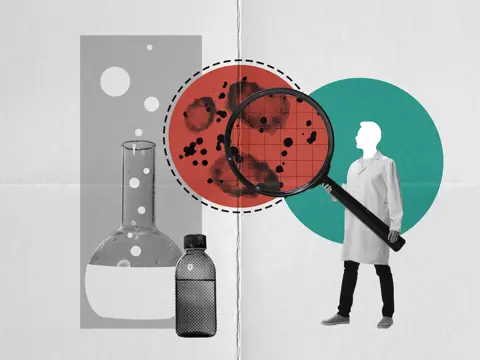
The COVID-19 pandemic drastically altered both business and social life, but also initiated an unprecedented collaborative effort to rapidly develop and deploy vaccines to bring it to an end. However, this endeavour saw many challenges and obstacles that had to be identified and managed to achieve its goal.
One challenge was posed by the vaccines themselves: Due to our experience with other human coronaviruses (for example the SARS and MERS outbreaks in 2002, 2004, and 2012) as well as efficient preparations of medicine regulators, the first COVID-19 vaccines were rolled out only nine months after COVID-19 was declared a pandemic. Although timely, its rapid development caused doubts and vaccine hesitancy in the public, as previous vaccines have taken years, if not decades, to be developed, tested, and rolled out. Furthermore, with much of social life moving online, vaccine misinformation easily spread and grew into an infodemic that made matters worse. As a result, many national regulatory authorities, such as the European Medicines Agency, the US Food and Drug Administration, and UK Medicines and Healthcare Products Regulatory Agency implemented extraordinary transparency measures and regular communications to keep the public informed and fight its spread.
Preparations for the safety surveillance of the new vaccines included the establishment of data-sharing mechanisms between stakeholders such as national immunisation programs, market authorisation holders and national vaccine regulatory authorities. To ensure the timely identification of severe adverse events following the new vaccines, adverse events of special interest were defined based on experience from other vaccination campaigns and knowledge about the new vaccines. To better understand what reactions were likely caused by the COVID-19 vaccine and which were merely correlated to the time of vaccination, so-called background rates for certain events were investigated. Background rates describe how often a certain reaction occurs in a population without the presence of a suspected trigger (in this case: the COVID-19 vaccine).
Once the rollout and administration of the first vaccines began, new challenges came to light. In most countries the vaccine rollout followed a prioritisation scheme which resulted in people being vaccinated that had been excluded from clinical trials (for example the elderly, pregnant women, or people with chronic illnesses), resulting in a lack of information regarding the vaccines’ safety for those at-risk populations. The first reports of suspected adverse reactions following COVID-19 vaccination arrived soon after the first vaccines were administered, and the volume of incoming reports grew exponentially. This reflected the intense public focus on the vaccines’ safety and not necessarily on safety issues with the vaccine itself.
Thus, national pharmacovigilance centres had to adapt their workflows to efficiently analyse this data and identify any emerging safety issues as fast as possible. To help in this endeavour, the WHO Adverse Events Following Immunisation (AEFI) reporting form was digitalised and implemented in VigiFlow, the UMC data entry tool for member states of the WHO Programme for International Drug Monitoring. The functionality of VigiFlow was also extended to allow data analysis so that member countries may perform timely analysis of their national data using one system.
VigiBase updates also increased from weekly to biweekly to be as current as possible. Furthermore, the new COVID-19 vaccines were grouped within a new Standardised Drug Grouping (SDG) to help investigators with data extraction and analysis.

At UMC we usually perform signal detection on the global level focusing on rare or emerging issues that may not be identified at the national level due to a limited number of reports. As already mentioned, the sheer mass of incoming COVID-19 AEFI reports made it necessary to adapt our workflows. Instead of regular focused signal detection workshops (so-called signal sprints), we performed continuous monitoring of VigiBase data, communications from national centres, as well as scientific literature.
The increased reporting by consumers and healthcare practitioners in combination with the intensified monitoring by marketing authorisation holders resulted in many duplicates in VigiBase. In VigiLyze, an algorithm called vigiMatch helps us to identify duplicate reports for drug reports. This algorithm, however, does not work reliably for vaccine reports. Since the case series we worked with grew from a maximum of 30 reports to several hundreds or even thousands of reports, a reliable tool was required to analyse this data. To this end, UMC’s research department developed a decision support prototype tool which significantly facilitated signal assessment of large case series. Another phenomenon we observed was the different coding practices in the member countries. We received reports coding for different reactions that in the end described the same clinical picture. A new clustering algorithm called vigiGroup was therefore developed and implemented in the signal management process to help identify signals for clinical pictures rather than single reactions.
We further prioritised identified signals according to the seriousness of the observed reaction or clinical picture, its clinical importance, its impact on public health, other available evidence for the signal (eg, from the scientific literature or pre-clinical and clinical data), and the geographic spread of the reports we received (ie, is it a global issue or does it point to a localised problem?) to determine which issue needed to be addressed first.
Looking back on this experience, the impact of these and other adaptations to vaccine safety monitoring were impressive. Despite extensive experience from the Expanded Program on Immunisation, the importance of strengthening and adapting vaccine safety monitoring programs especially in low- and middle-income countries represents an important but challenging task for the scientific community in the future. The introduction of extensive transparency measures by regulatory authorities worldwide regarding COVID-19 vaccines and related issues is a very positive development. However, it is important to ensure that transparency does not stop once the pandemic ends and that the dialogue between stakeholders of drug and vaccine safety will continue.
READ MORE:
“COVID vaccine confidence requires radical transparency”, Nature, 2020.
“Into the infodemic: Countering COVID’s medicine myths”, Uppsala Reports, 2020.




